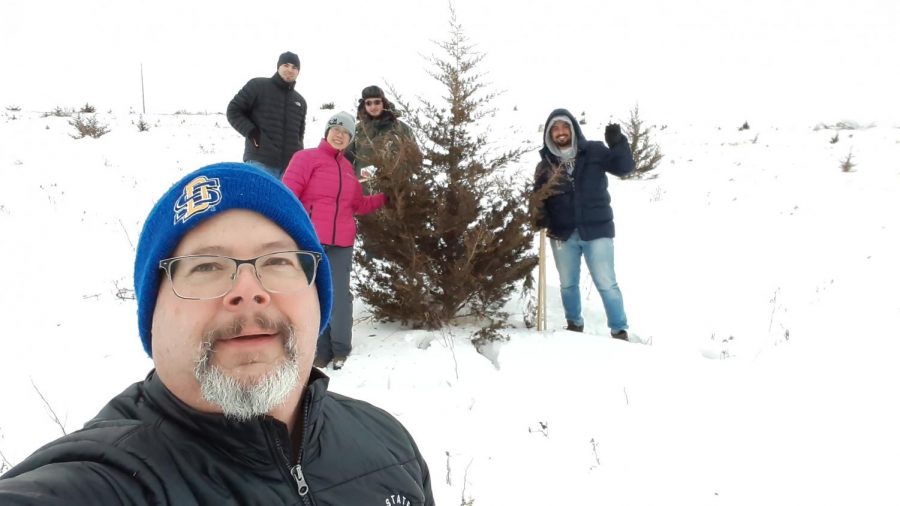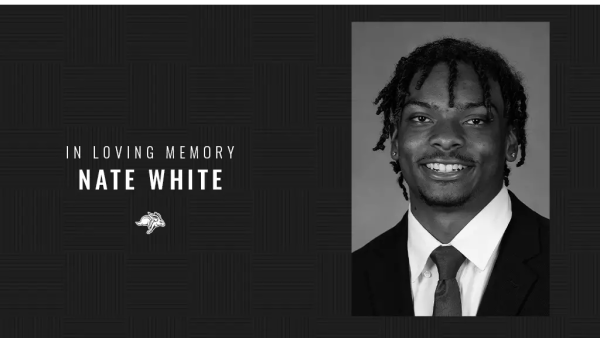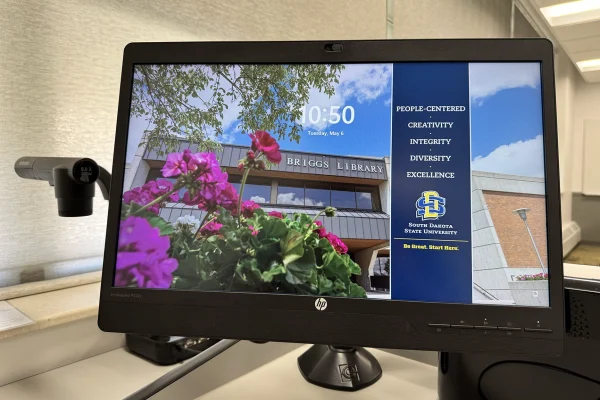Symposium highlights undergraduate research, achievements
April 20, 2021
Ninety students participated in South Dakota State University’s annual undergraduate research symposium this year. The symposium highlighted student research and creative endeavors from 11 different fields of study.
The Undergraduate Research, Scholarship and Creative Activity Day (URSCAD) is an annual event hosted by the Van D. & Barbara B. Fishback Honors College, traditionally held as an in-person poster presentation event. However, for the past two years, URSCAD has been transformed into a virtual poster presentation, allowing students to record a short presentation of their research poster to be judged by expert SDSU faculty.
We met with two award-winning presenters from the 2021 URSCAD to showcase some of the research SDSU undergraduate students are working on.
Riley Mounsdon, junior natural resource law enforcement, wildlife and fishery sciences and ecology and environmental science from Osakis, Minnesota
Project title: Finding the Sweet Spot for Control: Age and Growth Relationships of Eastern Red Cedar (Juniperus virginiana) in Eastern South Dakota
Q: How did you get started with undergraduate research?
A: “So I actually got to know Lan Xu … through one of my classes. She noticed me out of the class as being one of those people that liked to work hard, so she asked me to do research assistant work for the natural resource management department.
I started on our eastern red cedar tree project as a research assistant. Then, a couple months later she said ‘hey, if you wanted to do a project, we’d have a project for you if you want to try.’ So that’s basically how I got started. I went out and met with her and another professor, Alexander Smart and they laid out what I was going to do.”
Q: What did you do for your research project?
A: Eastern red cedar trees are starting to encroach on a lot of grasslands. So for our study, we’re looking at how eastern red cedar trees affect the environment in the grasslands where they’re encroaching.
It was a lot of age and growth rate relationships. We wanted to learn how fast they’re growing and what kind of variables might be good indicators of how fast they’re growing so producers can go out and be like ‘okay, we need to manage these trees now versus in 10 years when the problem is worse.’
So what we did was we went out to a grassland site by Volga, South Dakota, and collected 40 trees from five different size classes, eight trees of each. We measured how tall they were, how wide they were canopy-wise and a couple other variables like diameter at breast height if they were big enough for that.
Then we cut them down, and I took a sample, probably six or eight inches long, off the trunk and brought it back to the lab to examine. At the lab we took a half-inch wide stem disc, and I sanded it down, wet it down and put it under a microscope to measure and count the rings.
That was the majority of the work, then we looked at a couple other variables where we just kind of used what we had … some weather variables and stuff like that.”
Q: What did you think of the URSCAD program?
A: I thought it was pretty cool. I already had done a poster because I presented at the Society of Range Management National Conference this year, so I already had the poster done. I just had to make a recording.
I liked doing it because it felt [like] less pressure than like Society of Range Management. I mean, Range Management, you’re talking to all the professors from all over the country, and there were even a couple of international people there, so you’re going in front of everybody, whereas URSCAD was competing against the people in the college and looking at what they did versus what you did.
I thought it was pretty cool, too, how I got to make a recording of how I would explain my poster. Instead of somebody just walking up and looking at my poster and maybe getting a different impression, I could kind of explain ‘this is why we did this, this is what this means, this is what we recommend in the future,’ stuff like that, so I really enjoyed it.
The poster wasn’t the hard part. I mean, making a poster might take a couple of hours … but actually dedicating yourself to the actual research project took a lot more time. So if you’re looking for [something] a little more challenging, something to kind of step up your game, I’d recommend doing URSCAD.
Matt Stoel, senior electrical engineering student from Sioux Falls, South Dakota
Project title: Techno-Economic Solar Analysis of Rural Electric Cooperatives
Q: How did you get started with undergraduate research?
A: Mostly through the Honors College, one of the last requirements that I have to fulfill before the Honors College distinction at graduation is to complete my independent study, which I’ve been discussing with Timothy Hansen since about this time last year. We started thinking about what we wanted to do and started to nail down ideas last fall. We really got started on the project in January.
Q: What did you do for your research project?
A: Basically we’re looking at situations where there’d be a large amount of residential solar photovoltaic systems installed, and say, like a ton of these systems go into one little area, or one distribution feeder. That would cause more power to be generated, then that little area would actually consume by itself. So you’re sending power backward.
That can lead to overvoltage situations. So basically what we’re looking at is … We’re using a sample model from Sioux Valley Energy, and some speculative solar installment sizes and quantities to see what cases break the system, and to what extent is it not worth it to add any more solar.
As the voltage gets too high, you have to start curtailing power so that you’re not, you know, furthering the problem. So then, it’s still outputting power but it’s just not as effective … you’re kind of wasting your installment. So we’re also looking at what are the economic impacts of that, being that solar is kind of on the edge of being economically viable on its own.
It did require a lot of coordination with Sioux Valley Energy to get a model and get sample load data and what kind of cases we’d be looking at. This is actually a joint project with the University of Minnesota … My portion is a small part of that project and it’s more of looking at the non-ideal situations where there’s more looking at ideal circumstances over a full year.
Q: What did you think of the URSCAD program?
A: I think it’s a great opportunity to showcase a student’s undergraduate research. It’s kind of a no-brainer to participate in this because (students doing undergraduate research) likely already have presentations prepared or some sort of poster prepared, so you might as well participate, get some feedback and learn what areas you can improve.
I was also looking through all the other engineering submissions and I noticed … Atlas 2.0 was participating. I never would have even thought about URSCAD for a Senior Design Group, but I think that’s a great idea.





















